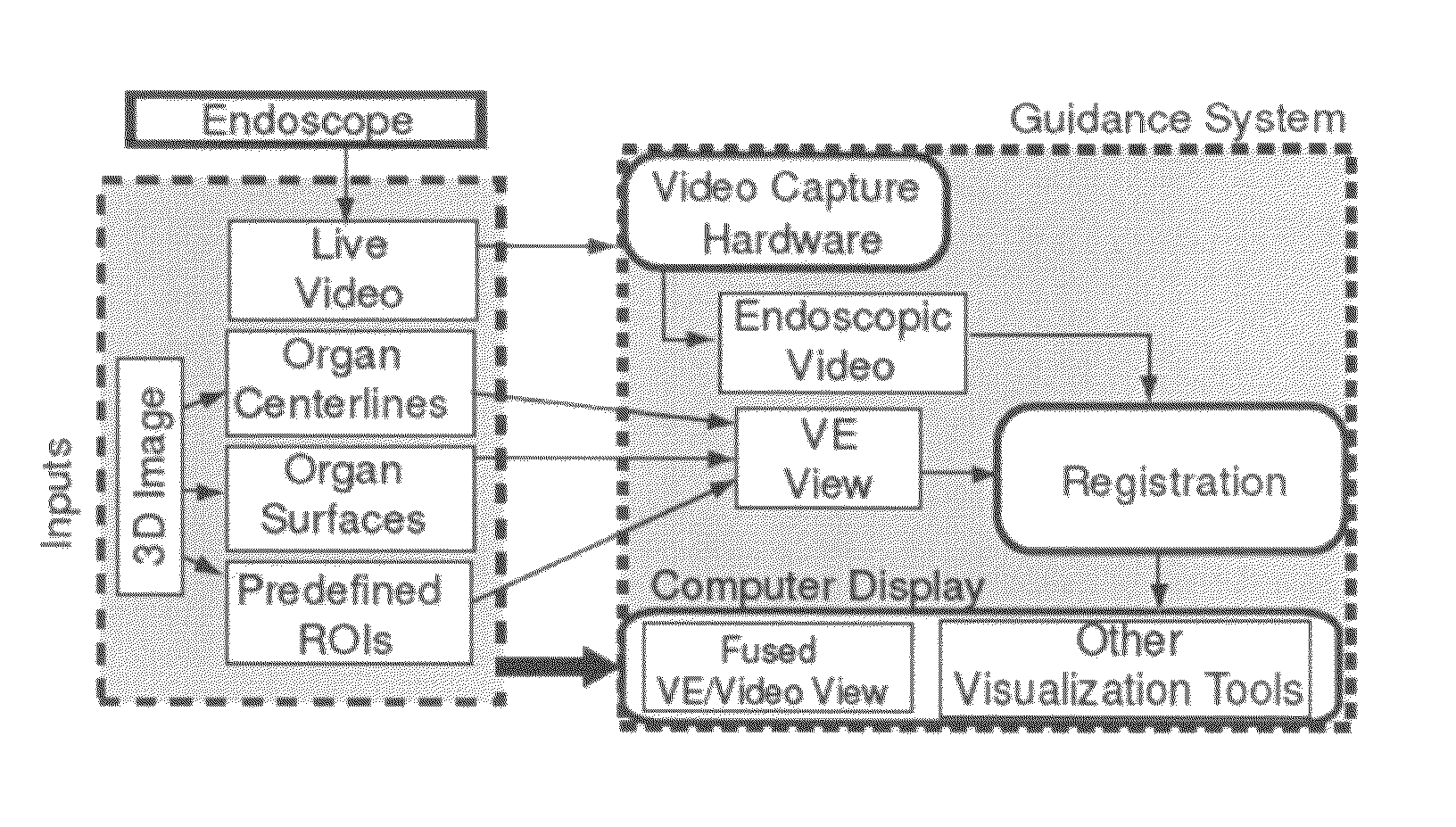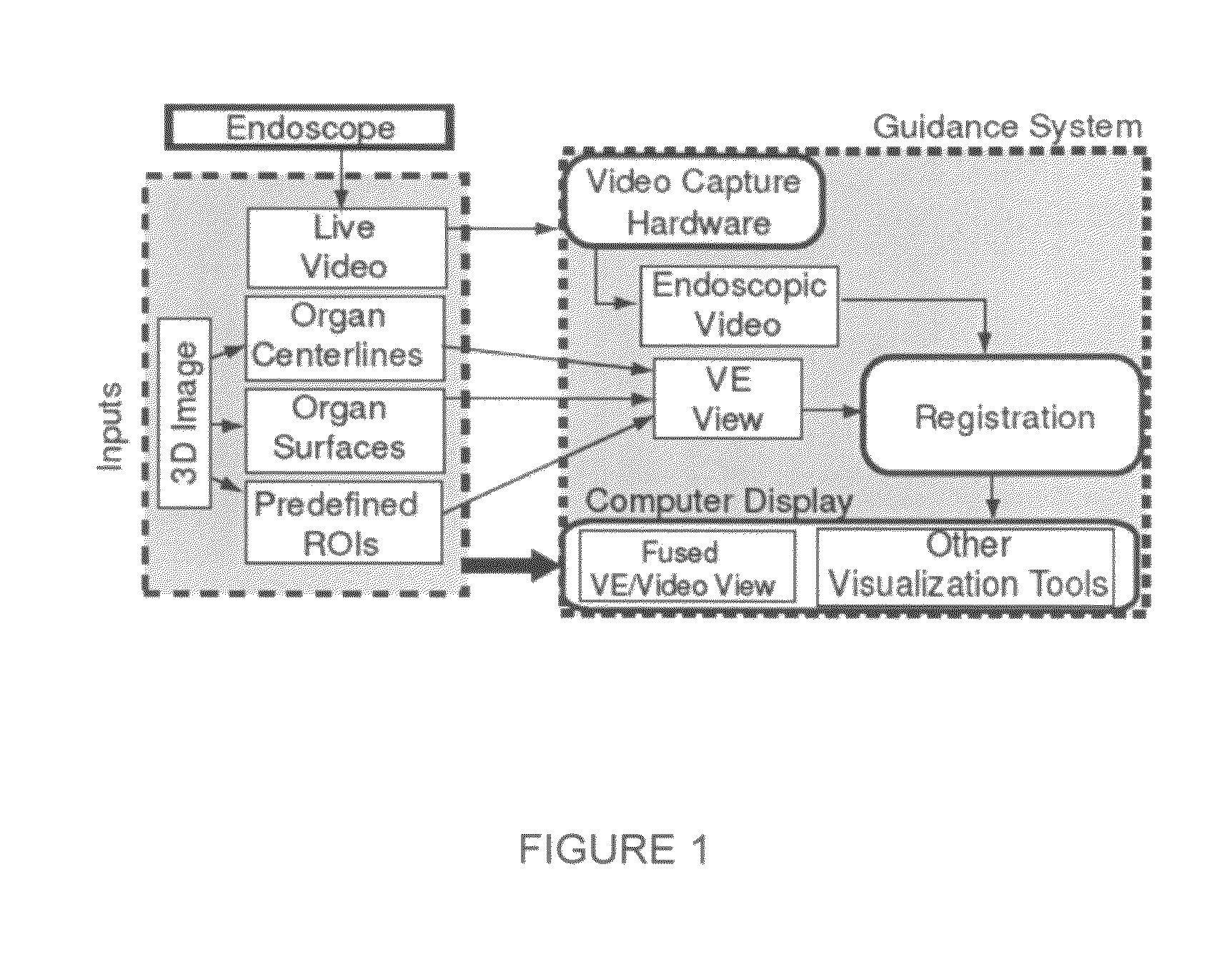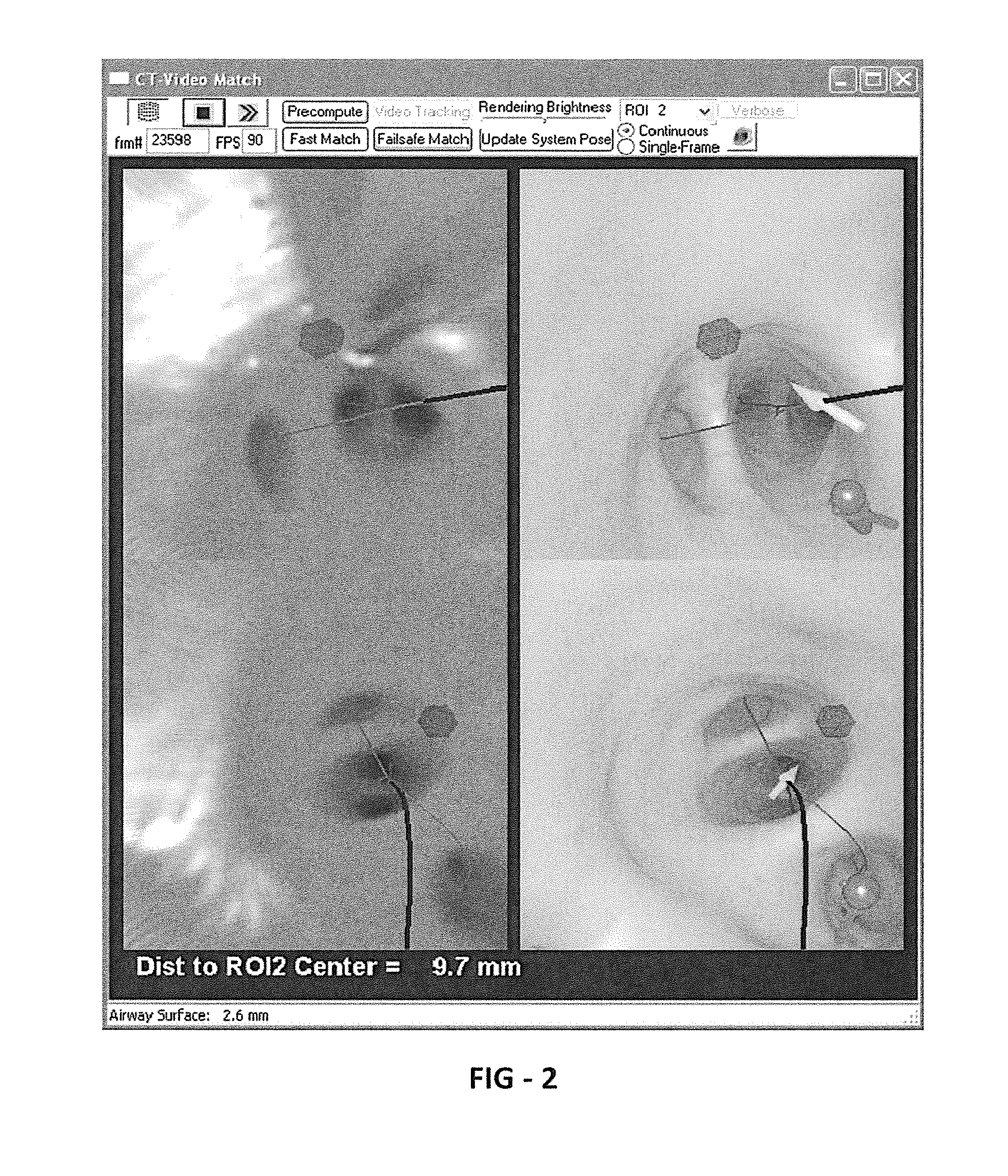Method and apparatus for continuous guidance of endoscopy
a technology of endoscopy and guidance apparatus, which is applied in the direction of static indicating devices, instruments, applications, etc., can solve the problems of navigation errors, difficulty in identifying airways in ct slices, and exacerbated difficulties
- Summary
- Abstract
- Description
- Claims
- Application Information
AI Technical Summary
Benefits of technology
Problems solved by technology
Method used
Image
Examples
Embodiment Construction
[0022]This invention resides in a system-level approach to guidance of endoscopy, including a complete paradigm for real-time image-based guidance providing a physician with continuously-updated navigational and guidance information.
[0023]At least three novel embodiments for guidance of endoscopy are disclosed. Additional elements such as global surface rendering, local cross-sectional views, and pertinent distances provide additional utility to the physician. Phantom results were generated using bronchoscopy performed on a rapid prototype model of a human tracheobronchial airway tree. The system has also been tested in ongoing live human tests. Ten such tests have been performed thus far and focus on bronchoscopic intervention of pulmonary patients using 3D chest CT.
[0024]This disclosure presents generally applicable methods, but focuses on the chest and bronchoscopy. In this domain, Phase I centers around acquisition and analysis of an MDCT image, where the ROIs may be lymph nodes...
PUM
 Login to View More
Login to View More Abstract
Description
Claims
Application Information
 Login to View More
Login to View More - R&D
- Intellectual Property
- Life Sciences
- Materials
- Tech Scout
- Unparalleled Data Quality
- Higher Quality Content
- 60% Fewer Hallucinations
Browse by: Latest US Patents, China's latest patents, Technical Efficacy Thesaurus, Application Domain, Technology Topic, Popular Technical Reports.
© 2025 PatSnap. All rights reserved.Legal|Privacy policy|Modern Slavery Act Transparency Statement|Sitemap|About US| Contact US: help@patsnap.com



